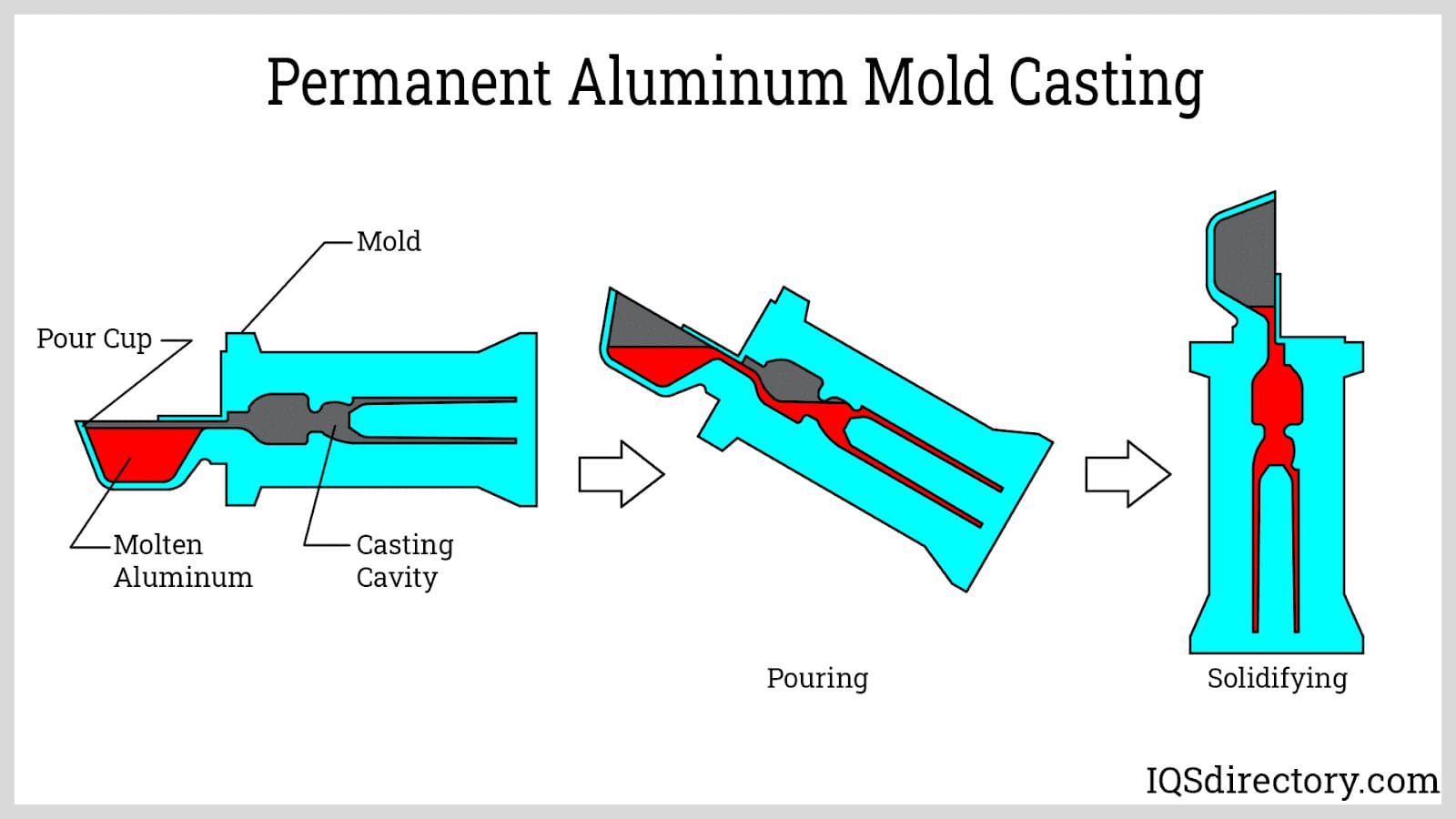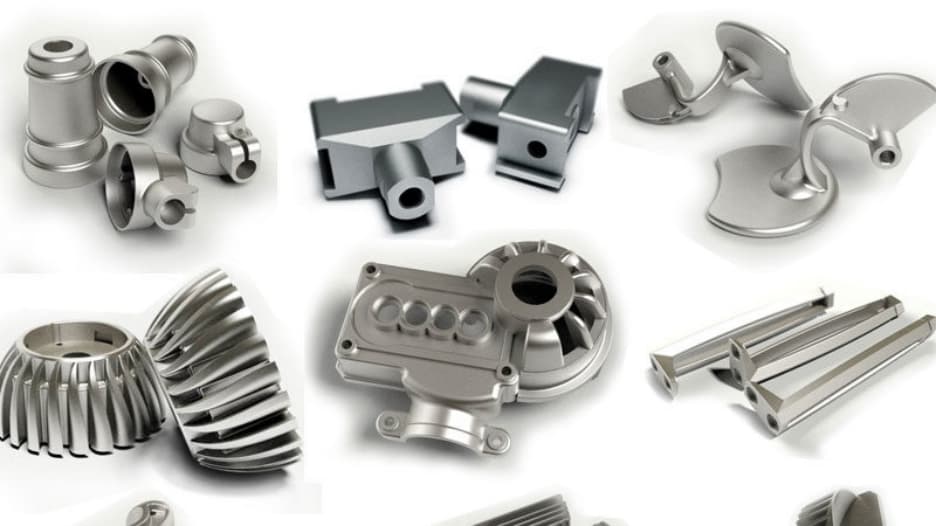How an Aluminum Casting Manufacturer Helps Create Detailed Components With Accuracy
Recognizing the Production Refine of Aluminum Spreading: A Comprehensive Overview
The manufacturing procedure of aluminum Casting is elaborate and multifaceted. It encompasses different methods that change molten light weight aluminum right into exact shapes. Each approach, from sand Casting to die casting, plays a vital function in the end product's high quality. Recognizing the nuances of light weight aluminum alloys and melting procedures is basic. As one explores the intricacies of molding and completing strategies, the significance of quality assurance ends up being noticeable. What aspects really affect the success of this process?
The Essentials of Light Weight Aluminum Spreading
Light weight aluminum Casting is a crucial production procedure that transforms molten light weight aluminum right into exact, intricate forms. This process starts with the careful melting of aluminum ingots or scrap in a heater, where temperatures go beyond 660 levels Celsius. Once molten, the light weight aluminum is poured into pre-designed mold and mildews, which dictate the last type of the actors component.
Cooling takes place as the light weight aluminum strengthens, permitting it to take on the attributes of the mold and mildew. The high quality of the last product is affected by elements such as the purity of the aluminum, the layout of the mold and mildew, and the air conditioning price. After solidification, the molds are eliminated to reveal the actors item, which might undertake extra completing processes, such as machining or surface treatment, to satisfy specific resistances and visual demands. On the whole, aluminum Casting works as a fundamental strategy in the manufacturing of numerous elements across markets.
Kinds Of Light Weight Aluminum Casting Processes
The numerous light weight aluminum Casting procedures play an important duty in making performance and product quality. Key techniques include sand spreading, which is affordable and versatile; pass away spreading, known for its accuracy and speed; and long-term mold and mildew spreading, which offers durability and enhanced surface area finish. Each strategy has its one-of-a-kind advantages, making them appropriate for different applications in the market.
Sand Casting Strategy
While many Casting methods exist, sand Casting stays among one of the most extensively used methods for forming light weight aluminum parts. This process entails developing a mold and mildew from sand, which is compacted around a pattern to form the desired shape. As soon as the mold and mildew is prepared, molten aluminum is put right into the tooth cavity, where it takes and solidifies on the type of the mold. Sand Casting is specifically valued for its flexibility, permitting the manufacturing of intricate sizes and shapes. Additionally, it is affordable for both little and huge manufacturing runs. The method is suitable for different light weight aluminum alloys, making it a preferred choice in markets ranging from vehicle to aerospace. Its simpleness and adaptability add to its enduring appeal in light weight aluminum spreading.
Pass Away Casting Method
Die Casting stands for an extremely effective approach for creating light weight aluminum components, defined by its capability to create detailed forms with exceptional dimensional accuracy. This procedure involves forcing molten aluminum right into a steel mold and mildew at high stress, which permits rapid production and minimal waste. There are two primary kinds of die casting: warm chamber and cold chamber. Hot chamber pass away Casting is appropriate for low-melting-point alloys, while cool chamber die Casting is perfect for higher melting points, supplying versatility in product selection. The die Casting technique not only ensures smooth surface coatings but likewise enables the production of complicated geometries that are challenging to accomplish with other Casting strategies. In general, die Casting is essential for sectors requiring high-volume production of accuracy components.
Long-term Mold Casting

The Light Weight Aluminum Casting Materials
Light weight aluminum casting relies on a variety of products to achieve the preferred residential properties and performance attributes of the end product. The main material used is aluminum alloy, which contains various aspects such as silicon, magnesium, copper, and zinc to enhance details qualities like toughness, deterioration resistance, and thermal conductivity. The selection of alloy is essential, as it directly influences the mechanical properties and casting habits.
In addition to the light weight aluminum itself, other products play substantial roles in the Casting procedure. Sand, made use of in sand casting, provides the mold structure, while ceramic products can be used for complex forms in financial investment casting. In addition, additives like changes might be integrated to boost fluidity and lower oxidation throughout the Casting procedure. Each of these materials is chosen based on the demands of the end product, ensuring excellent performance and longevity in its designated application.
The Light Weight Aluminum Melting Process
Before casting, the aluminum needs to undertake a melting process to change it from solid to liquid kind. This procedure typically occurs in a heater, where the aluminum is heated up to its melting factor, around 660 degrees Celsius (1220 degrees Fahrenheit) Numerous sorts of heating systems might be employed, consisting of induction, resistance, and gas-fired heaters, each providing various advantages pertaining to performance and environmental impact.

Molding Strategies in Light Weight Aluminum Casting
Molding methods play an essential role in the aluminum Casting process, influencing both the high quality and efficiency of the end product. The sand molding procedure and various die Casting methods are 2 predominant methods employed in the industry. Each method provides unique benefits and is suited for different applications, affecting the overall manufacturing result.
Sand Molding Refine
While various strategies exist for shaping aluminum spreadings, the sand molding process remains one of the click here most commonly made use of methods in the market. This method employs a blend of water, clay, and sand to produce molds that can hold up against the high temperature levels of molten aluminum. The process starts with developing a pattern, normally made from steel or plastic, which is then pushed right into the sand mixture to create the mold and mildew dental caries. As soon as the pattern is eliminated, the mold and mildew is constructed, and molten aluminum is poured into the tooth cavity. After cooling down, the sand is damaged away, disclosing the finished spreading. Sand molding supplies adaptability in layout and is affordable, making it ideal for both big and small production runs.
Die Casting Methods
Pass away casting techniques represent one more considerable method in aluminum casting, offering distinctive advantages over traditional sand molding. This process includes compeling liquified aluminum into a steel mold under high stress, making it possible for the manufacturing of complex shapes with limited tolerances. There are 2 primary kinds of die casting: hot chamber and cool chamber. In hot chamber die casting, the injection unit is submerged in molten metal, ideal for low-melting-point alloys. Alternatively, chilly chamber pass away Casting requires the steel to be thawed in a different heating system and afterwards infused into the mold and mildew, making it appropriate for higher melting-point alloys. Both approaches boost manufacturing effectiveness, minimize waste, and improve surface coatings, making die casting a favored choice for many applications in the manufacturing industry.
Completing Procedures for Light Weight Aluminum Castings
Ending up procedures are necessary to enhance the appearance and efficiency of aluminum spreadings, ensuring they meet the specific needs of various applications. These procedures consist of cleaning, surface treatment, and coating. Cleaning up gets rid of any type of residual materials, such as oils or sand, from the Casting surface, preparing it for further therapy.
Surface treatment techniques, such as shot blasting or fining sand, aid accomplish a consistent texture and boost adhesion for layers - Aluminum Casting Manufacturer. Plating is a popular finish strategy that boosts rust resistance and provides a cosmetically pleasing surface
In addition, powder coating can provide long lasting shade options, while painting enables modification in appearance. Machining may likewise be utilized to attain specific dimensions or additional surface area coatings. Each completing procedure plays a crucial duty in boosting both the functional and aesthetic facets of light weight aluminum spreadings, adding to their total high quality and durability in various industrial applications.
Quality Control in Light Weight Aluminum Spreading
Quality control in aluminum Casting is an important facet of the production process that assures the final products satisfy the needed standards and requirements. This process includes systematic evaluations and tests throughout numerous stages of manufacturing. Raw materials are examined for chemical structure and contaminations to verify they conform to sector norms. During spreading, parameters such as pressure, temperature, and cooling prices are carefully checked to protect against defects like porosity or imbalance.
Post-casting examinations consist of non-destructive screening techniques, such as X-ray or ultrasonic exams, to find internal imperfections. Additionally, dimensional checks examine the accuracy of the actors parts against style specifications. The implementation of high quality management systems helps in recording and tracking these procedures, permitting continual improvement. Aluminum Casting Manufacturer. By adhering to rigorous top quality control steps, makers can boost product integrity and efficiency, ultimately pleasing client needs and lowering manufacturing costs connected with rework or scrap
Often Asked Concerns
What Are the Environmental Influences of Light Weight Aluminum Spreading?
The ecological influences of light weight aluminum Casting include power consumption, greenhouse gas emissions, and waste generation. Furthermore, the procedure can cause water pollution and environment destruction, highlighting the need for sustainable practices in the sector.
Just How Does Light Weight Aluminum Casting Compare to Other Metal Casting Processes?
Light weight aluminum casting deals benefits such as reduced melting temperature levels and lighter weights compared to other steel Casting procedures. This leads to decreased energy usage and better style versatility, making it a favored choice for different applications.
What Precaution Are Essential During Aluminum Casting?
Safety procedures during light weight aluminum Casting consist of wearing safety equipment, guaranteeing correct ventilation, preserving tools frequently, executing fire safety protocols, and giving training on managing molten metal to reduce accidents and wellness threats in the workplace.
How Can I Recycle Aluminum Castings Successfully?
Recycling light weight aluminum spreadings efficiently involves collecting scrap, cleaning up impurities, and melting the aluminum (Aluminum Casting Manufacturer). The procedure should ensure proper separation of different alloys to preserve high quality, followed by casting into new types for reuse in production
What Prevail Problems in Aluminum Castings and Their Reasons?
Typical defects in aluminum castings consist of porosity, contraction, and misalignment. These issues often arise from inadequate melting temperature levels, inappropriate mold design, or not enough cooling prices, influencing the last product's toughness and integrity.
Each technique, from sand Casting to pass away spreading, plays an essential role in the final product's top quality. Trick techniques consist of sand spreading, which is affordable and versatile; pass away spreading, known for its precision and speed; and irreversible mold casting, which supplies durability and improved surface area coating. While several Casting approaches exist, sand Casting continues to be one of the most widely used methods for forming light weight aluminum components. The die Casting approach not just assures smooth surface area finishes but also makes it possible for the manufacturing of intricate geometries that are hard to attain with various other Casting strategies. Sand, used in sand casting, gives the mold framework, while ceramic products can be used for intricate shapes in investment casting.